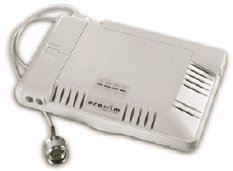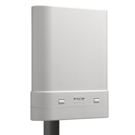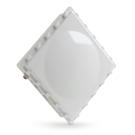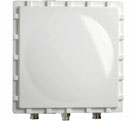 |About|News|Products|Prices|Solutions|Support|Registration|Services|Jobs|Contacts|Home|
|About|News|Products|Prices|Solutions|Support|Registration|Services|Jobs|Contacts|Home| 
 |About|News|Products|Prices|Solutions|Support|Registration|Services|Jobs|Contacts|Home|
|About|News|Products|Prices|Solutions|Support|Registration|Services|Jobs|Contacts|Home| 
Proxim wireless network products

- UBIQUITI Networks outdoor wireless products ;
UAB Matrix specialists have participated in Reval Hotel Lietuva on May
21, 2008 Proxim seminar, which was carried out by Ralf Labeda,
regional manager, from Sweden. He spoke about Municipal networks,
Last Mile Access, Security and Surveillance, Public Hotspots, Mobile
Enterprise, and Carrier Backhaul connectivity.
The cheapest model, which supports traffic shaping, and is suitable for
WISPs (or bandwidth management, QoS), PTP and PTMP, are PROXIM Tsunami
Mp.11 in both cases (indoor, or outdoor). List price for the
indoor one with window antenna is 325USD for subscriber models.
Here is the base station: http://www.proxim.com/products/mp11_bs/index.html.



(5012-SUI indoor subscriber unit) (5012-SUR
outdoor subscriber unit) (base station unit)
Apart from QOS/Shaping you can actually build service levels based on
minimal and commited service rates. Let us know if you need details on
the QOS etc, Matrix UAB team can send you some in depth info.
Extending its successful Tsunami MP.11 line of products, Proxim
released the Tsunami MP.11 5012 series. It is a family of economical
indoor and outdoor subscriber units designed specifically for large
scale wireless deployments on the residential market. Functioning in
the 5 GHz frequency bands, the 5012 series combines high-speed data
rates (12 Mbps), QoS, high-grade security and - before all - a
hyper-fast return on investment. More is here proxim-tsunami-mp11-5012_US.pdf.
What is the best solution for WISP (wireless internet provider)?
Take for example some WISP, which needs good rigid solution for CPE, with the following features:
1. speed 54mbits or more
2. client side must have bandwidth management (traffic shaping) function
3. AP must work in real speed 2Mbits in wireless mode (usually client uploads/downloads totally using ~2Mbits, sometimes 5mbits)
4. CIR/MIR function, which lets manage or limit upload and download speeds
5. telnet/ssh remote login support
6. configuration file remote upload/write, configuration file must not be encoded, or if encoded, ISP must know password
7. 2.4ghz or 5ghz (does not matter)
8. not necessary, but good if RJ45 port can be set in duplex, of
half duplex mode, speed change manually 10Mbits or 100Mbits
9. must be rigid, withstand flood attacks etc.
10. SNMP management support
11. not necessary but good if is VLAN support
Proxim answer to these questions:
1. speed 54mbits or more (This doesn´t match point 3, are we
talking 54 Mbps / client or less than 12 Mbps effective bandwidth?)
2. client side must have bandwidth management (traffic shaping) function (Ok)
802.16 Wimax type QOS is included + more.
3. AP must work in real speed 2Mbits in wireless mode (usually client
uploads/downloads totally using ~2Mbits, sometimes 5mbits) (Ok relating
to point 1)
4. CIR/MIR function, which lets manage or limit upload and download speeds (Ok relating to point 2)
5. telnet/ssh remote login support (Ok)
Telnet or HTTP (Not SSH)
6. configuration file remote upload/write, configuration file must not be encoded, or if encoded, ISP must know password (OK)
7. 2.4ghz or 5ghz (does not matter)
- 5 Ghz
8. not necessary, but good if RJ45 port can be set in duplex, of
half duplex mode, speed change manually 10Mbits or 100Mbits (OK)
There are 3 mode to choose from, half/full/auto
9. must be rigid, withstand flood attacks etc. (OK)
As we intra-cell-block the only flood can come from the ISP (Which is stopped by their Firewall)
10. SNMP management support (OK)
11. not necessary but good if is VLAN support (OK)
VLAN:s are supported
This solution price is 349 USD list, models which are suitable are
Proxim Tsunami MP.11 5012-SUI or 5054-SUI. (The client
need to use PROXIM basestation). In terms of the Tsunami
productline, those products are based on Proxim´s WARP protocol
for polling, QOS, and all other WiMax like functionality. In those
instances a Tsunami Base and Tsunami Subscriber units have to be used.
More on Proxim Tsunami MP.11 5012-SUI or 5054-SUI
mdoels: Proxim_MP.11-5012-SUI_5024-SUI_InstallManage_v4.0.pdf .
If the customer needs an AP only, in that case PROXIM can go for
the AP700 which can act as a client. In that case however the traffic
control is based on WiFi standards i.e. virtually no control other than
802.11e etc. PROXIM ORiNOCO AP-700 EU PSU - connectorized; World mode
list price is 449usd. AP700 is more expensive, but they can wokrk
with any base station, not only Proxim. Unless a client
uses the AP700 or AP4000 in simple client mode towards a 3:rd
party central AP, they would need Proxim base stations to use
WORP and Polling. It doesn’t make any sense to use the
700/4000:s in a situation like this as it offers inferior performance,
so if you need good performance please buy 5012-SUI or 5024-SUI.
WORP - is patented PROXIM protocol
Wireless Outdoor Routing Protocol, a Proxim Patent that could for sure
use more attention. There are stable links up to 20 Km:s in
Sweden, since over 2-3 years, starting from ~2005 year. Without
breaking ETSI rules. It´s sub 10 Mbps, but compared to turbo
3g customers are laughing all the way to the bank... It was point
to multipoint based on multiple point to point links. The major
question is how much a client moves. And if they move the question is
where and how fast. We have to focus on the licensing situation
due to saturation in some bands. From there at the service desired
(Throughput/Control/Range) and ROI. Unlicensed bands tend to be more
saturized than others. On the other hand, the unlicensed bands give
stealth speed to market. It´s very rare that someone tries to
"out compete" an existing player i.e. unlicensed bands are best to get
your "flag" on the top first. Glocalnet does this in Sweden and Telia
is working towards the same end. HotSpots are expected to grow 40%+
this year, 2008 in Sweden. In the end, as a customer you
only want to pay for the best utility at the lowest price, (x Mbps + y
Meters)/USD. Proxim is to be fairly, well positioned
in terms of Performance/Area/Price going forward. + Various
frequencies. If you want to find the best solution, ask UAB
Matrix team, sales@matrix.lt.
PROXIM links and solutions
Below you can find some links which describe with more details Proxim products and solutions:
1. Backhaul products: http://www.proxim.com/products/landing_backhaul.html
2. Multiple E1 links with software configurable radio(s) - http://www.proxim.com/products/g5/
3. Most popular and easy to deply from this area Quick Bridge series: http://www.proxim.com/products/quickbridge/index.html
4. Wireless LAN: http://www.proxim.com/products/landing_wlan.html
5. WiFi Mesh: http://www.proxim.com/products/landing_wifi_mesh.html
6. High Security (FIPS 140-2) Wireless solutions for Mobile Use
(Trains/Busses/Mobile Credit-Card Terminals/Border Control Vehicles,
etc) - http://www.proxim.com/products/mp11_hs
And some interested links to pdf which described Proxim
features&advantages, which you can buy from UAB Matrix, as an
authorizes reseller of Proxim:
1. Meshing, general overview: http://www.proxim.com/learn/library/whitepapers/mesh_primer_PP3-1005.pdf
2. WORP, general overview: http://www.proxim.com/learn/library/techoverviews/TT10-0403.pdf
3. Management/Site Planning/Reporting/RF Visualization/ Triangulation, ProximVision: http://www.proxim.com/downloads/products/proximvision/DS_PROXIMVISION_A4HR.pdf
If there is a project, our Matrix UAB team can do to you the following support:
- 2 support engineers ready to support you;
- presales - in case of need we can assist you in consumer, client site visits with one of these guys
- post sales - warranty and post warranty
repairs/services. On demand. Proxim service/repairs made in
Poland, no additional time to send to vendor = faster.
- DEMO - 50% off from MSRP for hardware and 40% for Software products
- TEST - on demand, we could arrange unit to test for our clients in case of need.
Proxim WIMAX solutions
July 2, 2008 MUNICH (WiMAX Day). The Germany company Televersa Online has awarded a contract to Proxim Wireless to provide equipment for the
Televersa WiMAX network in Bavaria. Televersa has a license to operate
WiMAX networks using 3.5 GHz spectrum in a mostly rural area in the
south east of Germany, covering a population of 2.5 million people, and
stretching from the outskirts of Munich to the borders of Austria and
the Czech Republic. According to a Proxim press release, “Televersa
Online has already deployed Proxim Tsunami MP.11 base stations and
subscriber units as the core communications platform for its wireless
“viaAIR” service across the 20,000 km2. region.”
Proxim Packs Wi-Fi and WiMAX Access in One Mesh Networking Box
 "Proxim
Wireless has launched a low-cost, outdoor wireless-mesh access point
that combines Wi-Fi and WiMAX radios, claiming it was the first to do
so."
"Proxim
Wireless has launched a low-cost, outdoor wireless-mesh access point
that combines Wi-Fi and WiMAX radios, claiming it was the first to do
so."
The MeshMAX
product makes it possible for many, even all of the nodes in a mesh
network to have a backhaul connection to a base station and the
Internet. Such an arrangement can boost the capacity of these networks
dramatically because the client devices connecting to each node share a
much larger broadband pipe to the Internet, claimed Proxim.
Typically, today's wireless mesh networks have nodes - access points--
that route data traffic among themselves over optimal paths and around
failed or congested nodes. In addition, only a few nodes make a
separate wired connection to the Internet, so mesh networks have to be
planned, managed and calibrated carefully to minimise the number of
hops from client device to Internet.
Some products, such as those from Wi-Fi mesh vendors including BelAir, Firetide and Tropos,
will use 2.4GHz radios for client connections, and separate, dedicated
5GHz node-to-node communications. Some deployments can connect these
nodes physically to a separate broadband wireless radio, including
WiMAX, for the backhaul connection.
Proxim's MeshMAX product does the same thing, with one 802.11b/g radio
in the 2.4GHz band and one 802.11a radio in the 5GHz band for Wi-Fi
connectivity. These radios are based on the company's Orinoco mesh
products, but MeshMAX adds a built-in, dedicated 802.16d, fixed, WiMAX
subscriber-unit radio from Proxim's Tsunami fixed-wireless product
line, which can make the backhaul connection directly to a WiMAX base
station. Thus, client, mesh and backhaul connectivity are integrated
into a single box. The WiMAX radio, based on an Intel chipset, works in
the 3.3G to 3.6GHz licensed band or the 5.1G to 5.8GHz unlicensed band.
MeshMAX also has a Layer2 Ethernet switch.
"It's cheaper to install [than two separate boxes], both capital and
operating expenses are lower, and it's all managed by our network
management software," said Pankaj Manglik, Proxim's president and COO.
Proxim's overall strategy isn't unique. Nearly every Wi-Fi mesh vendor
has announced plans to add WiMAX radios in the future. Recently,
NextWave Wireless , a supplier of WiMAX gear to carriers and operators,
acquired Go Networks for its Wi-Fi mesh and radio beam-forming
technologies. NextWave also plans to combine both types of radio into a
single product. However, Proxim said it was the first to ship such a
product.
This reads like a good product for deploying wireless mesh networks
using WiMax as the backhaul and node to node communications.
How to evaluate Wimax project implementation, efectiveness, costs: wimax-business-case-for-emerging_markets-rev1_2.pdf.
Please ask sales@matrix.lt if you are doing some wireless project.
Copyright MATRIX, UAB 2008-2012
